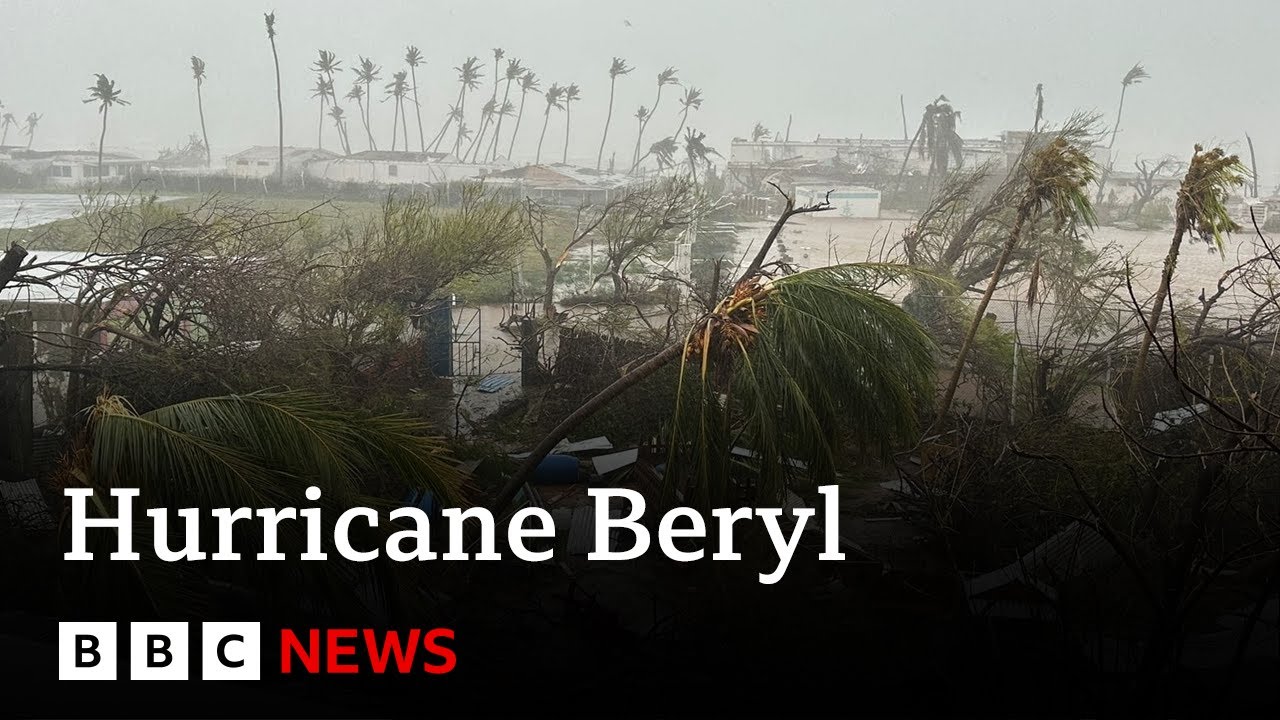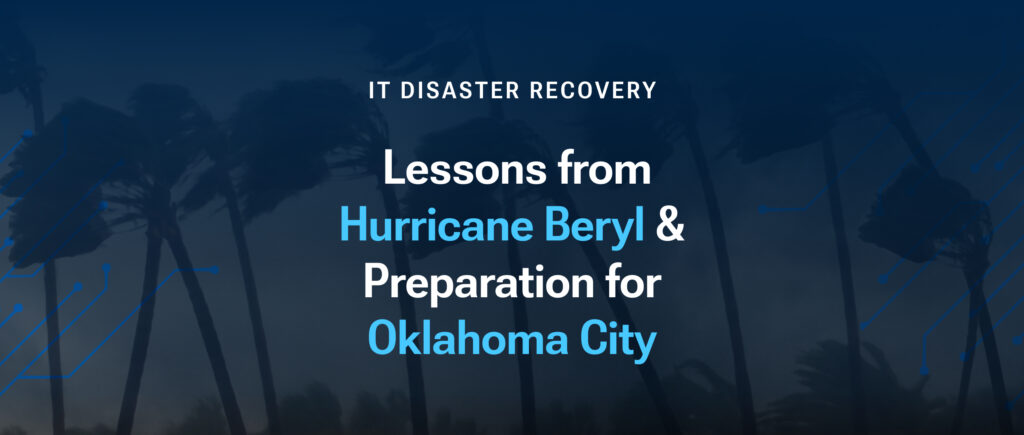Natural disasters, such as Hurricane Beryl, highlight the critical importance of a well-structured IT disaster recovery plan for businesses and governments alike. During Hurricane Beryl, which brought devastating impacts across the United States, organizations with robust recovery strategies minimized downtime and protected crucial data. As climate-related disasters become increasingly frequent, cities like Oklahoma City must take proactive steps to prepare for similar challenges.
This article explores how IT disaster recovery plans played a vital role during Hurricane Beryl and outlines actionable steps for Oklahoma City to strengthen its resilience.
How IT Disaster Recovery Helped During Hurricane Beryl
Hurricane Beryl caused widespread damage to infrastructure, disrupting power grids, communication networks, and IT systems across multiple states. Organizations that had implemented comprehensive IT disaster recovery plans managed to:
- Maintain critical operations.
- Recover data quickly.
- Reduce financial losses.
- Ensure business continuity.
Here’s a closer look at how these plans were executed:
1. Data Backup and Restoration
One of the primary components of an IT disaster recovery plan is data backup. During Hurricane Beryl, businesses that regularly backed up their data to secure cloud platforms were able to restore operations within hours. For instance:
- Financial Institutions: Banks used redundant data centers to maintain transaction processing and customer service.
- Healthcare Facilities: Hospitals accessed patient records stored on secure cloud platforms, enabling uninterrupted care despite local server outages.
2. Remote Accessibility
Disruptions caused by Hurricane Beryl forced many employees to work remotely. Organizations with recovery plans that included virtual private networks (VPNs) and secure remote access protocols ensured seamless operations.
For example, during the hurricane, government agencies coordinated relief efforts using cloud-based systems accessible from any location. This remote access prevented critical delays in disaster response.
3. Incident Response Teams
IT disaster recovery plans often designate specialized response teams to manage crises. These teams:
- Identified affected systems.
- Prioritized recovery tasks.
- Communicated with stakeholders to mitigate panic.
In Hurricane Beryl’s aftermath, such teams played a key role in restoring IT infrastructure for utilities and emergency services.
Lessons for Oklahoma City: Preparing for Natural Disasters
While Oklahoma City faces its own set of natural threats, such as tornadoes and floods, the lessons from Hurricane Beryl are highly relevant. By implementing a robust IT disaster recovery plan, businesses and local authorities can enhance their disaster readiness.
1. Assessing Risks
Every IT disaster recovery plan starts with a thorough risk assessment. For Oklahoma City, this includes:
- Evaluating the likelihood of tornadoes, floods, or severe storms.
- Identifying critical systems and data vulnerable to disruptions.
- Understanding interdependencies between IT and physical infrastructure.
2. Establishing Redundant Systems
Redundancy is key to minimizing downtime. Businesses and government agencies in Oklahoma City should:
- Utilize geographically dispersed data centers to ensure data availability.
- Implement failover systems to automatically switch to backup servers during outages.
For example, during Hurricane Beryl, organizations with redundant cloud systems avoided catastrophic data losses.
3. Employee Training and Awareness
Human error can exacerbate disaster impacts. Regular training ensures employees understand their roles in executing the IT disaster recovery plan. Key topics include:
- Secure handling of sensitive data.
- Recognizing phishing attempts during crises.
- Following incident response protocols.
4. Investing in Cloud Solutions
Cloud computing has become a cornerstone of disaster recovery. Cloud-based IT disaster recovery plans offer:
- Scalability: Resources can be adjusted to meet demand during emergencies.
- Security: Advanced encryption protects data from unauthorized access.
- Accessibility: Teams can access systems from anywhere, ensuring continuity.
Oklahoma City businesses should consider migrating critical systems to reliable cloud platforms to enhance disaster resilience.
5. Regular Testing and Updates
An IT disaster recovery plan is only effective if tested regularly. Simulating disaster scenarios helps identify gaps and refine strategies. In Oklahoma City, organizations should:
- Conduct annual disaster recovery drills.
- Update plans to address evolving risks and technologies.
- Ensure third-party vendors comply with disaster recovery standards.
Case Study: How IT Disaster Recovery Helped the U.S. During Hurricane Beryl
The successful implementation of IT disaster recovery plans during Hurricane Beryl provides valuable insights for Oklahoma City. Here are two examples:
Example 1: Financial Sector Resilience
A major U.S. bank had invested in a comprehensive IT disaster recovery plan, including:
- Real-time data replication across multiple data centers.
- Automated failover systems to reroute traffic during outages.
- Cybersecurity measures to protect against opportunistic attacks.
During Hurricane Beryl, the bank maintained uninterrupted services, ensuring customer trust and financial stability.
Example 2: Healthcare Continuity
A regional healthcare provider leveraged cloud-based electronic medical records (EMRs) to sustain operations. Key actions included:
- Daily backups to a secure cloud platform.
- Training staff to access EMRs remotely.
- Collaborating with IT vendors to prioritize system recovery.
Despite widespread power outages, the provider delivered consistent patient care throughout the disaster.

Challenges in IT Disaster Recovery Planning
While the benefits of an IT disaster recovery plan are clear, challenges remain:
- Resource Constraints: Small businesses may lack the budget for advanced recovery solutions.
- Evolving Threats: Cybercriminals often exploit disasters to launch phishing or ransomware attacks.
- Coordination Issues: Aligning IT recovery efforts with physical disaster response can be complex.
To overcome these challenges, Oklahoma City businesses should seek partnerships with managed service providers specializing in disaster recovery.

